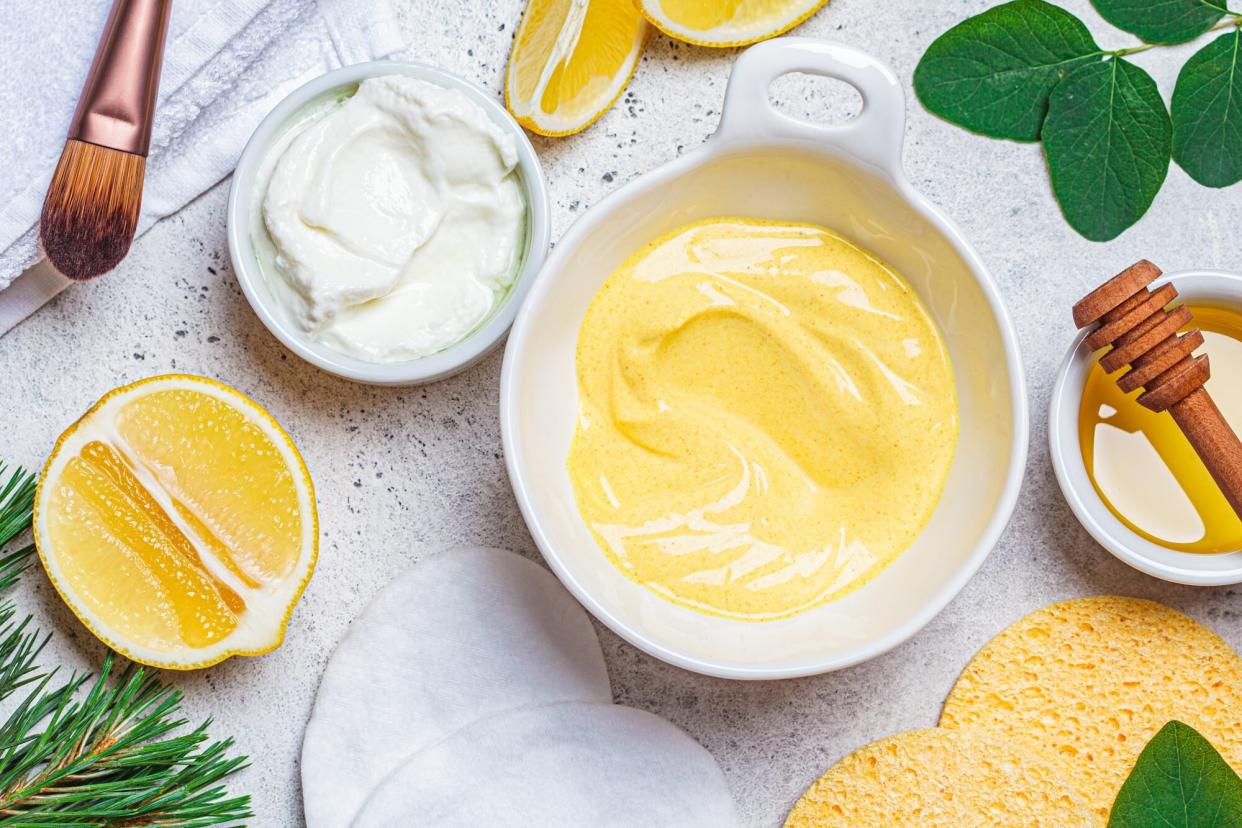What You Need to Know About Making Your Own Beauty Products

vaaseenaa / Getty Images
A myriad of natural, botanical-based beauty brands entered the market over the last decade, leading to the dawn of the clean beauty movement. Rose Marie Swift, the founder of RMS Beauty, was one of the first to develop a range of living ingredient-based products; today, you can walk into mainstream beauty stores and purchase her creations. Many beauty enthusiasts, channeling the ethos of these brands, hope to develop some of their own beauty products at home, often using only ingredients found in the fridge or pantry. According to Swift, doing this correctly is all about proper sourcing: It's important to use food-grade, organic substances in their natural states (she turns to a series of oils, including buriti, coconut, vitamin E, rosehips, and jojoba).
Still, attempting to create your own lip stain or face oil should be approached with caution. Ahead, Swift and Dr. Anthony Rossi Jr., a board-certified dermatologist and globally recognized expert on sensitive skin, weigh in on the dos and don'ts of creating beauty products at home.
Related: Going Clean? These Are the Best Natural Beauty Products to Add to Your Routine
Safety first.
While step-by-step guides to creating your own lip balms and salves are just a quick search away, it's important to vet all recipes with care and avoid ones with sensitizing ingredients. "If you're going to make your own cosmetics, don't use harsh or caustic substances," affirms Dr. Rossi. When applied in high concentrations, harsh agents, such as lemon juice, tea tree oil, or vinegar (all are common in DIY beauty recipes), can irritate or burn the dermis. Unfortunately, Dr. Rossi has seen many patients who have attempted these creations experience chemical burns, irritation, or post-inflammatory hyperpigmentation. To combat this, "know what you're using in your skin care products," Swift notes. She recommends going to ewg.org, a database that helps people avoid possible harmful compounds, whether they are purchasing them at a store or making them at home.
Look into your fridge for ingredients.
Beets, hibiscus, and berries—all of which can be found in your pantry and fridge—have been used for centuries to give lips and cheeks a subtle stain. If you're creating a lip balm, fruits will work as pigment, but Swift notes that they won't deliver opaque color; they are also "unstable and change color after a short time." Milk or yogurt masks, notes Dr. Rossi, are also popular fridge-derived beauty treatments; they calm the complexion, but, again, don't have a stable shelf life. Looking to extend the life of your concoctions? Rosemary extract and coconut oil are naturally occurring preservatives, notes Swift.
Choose the correct oils.
"Not all oils are suitable for cosmetic use," warns Swift. She recommends sticking with natural iterations in their purest form; olive oil, raw coconut oil (an anti-fungal and anti-bacterial), tea tree oil, and vitamin E are readily available at home. "Jojoba is an excellent choice because it closely resembles the sebum produced by our skin," she notes. However, Dr. Rossi adds that certain oils cause irritation when used in high doses and applied directly on the skin. Tea tree oil, for instance, can cause burns if not properly diluted. Swift also advises caution when working with essential oils—she prefers abstaining from them entirely: "If you have rosacea, eczema, or psoriasis, you should avoid using essential oils. They might be irritating."
It's hard to know when DIY beauty products expire or turn rancid.
There is no way to test for rancidity when making DIY beauty goods, but if you're committed to attempting a recipe, Swift recommends utilizing raw components—like coconut and jojoba oils—as a base; these last for about two years. The shelf life of sesame (two months), safflower (three months), and olive (four months) oils are substantially shorter. Unfortunately, home-made substances that haven't been commercially manufactured or evaluated are likely susceptible to bacterial, fungal, or viral growth. "Commercially sold goods undergo extensive testing to verify that bacteria and other contaminants do not grow in the formula and that the formula remains stable over time," explains Dr. Rossi, noting that more ambitious at-home potions are unlikely to work as well. "As a result, the product would not function as planned."

